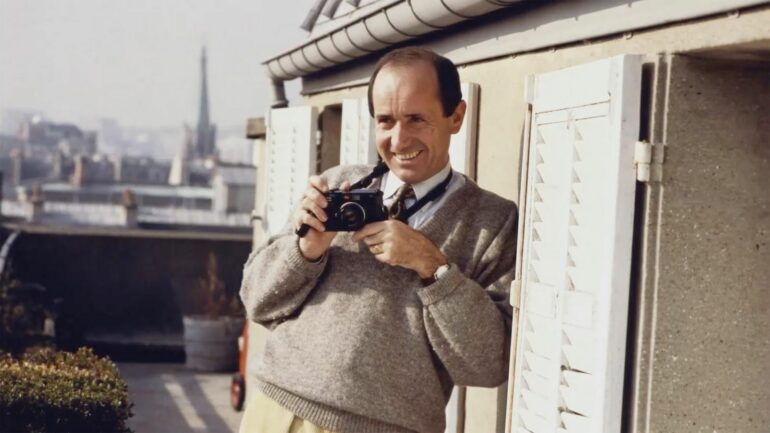Hermès, a family-owned luxury goods business, epitomizes a blend of creativity, craftsmanship, and a rich history marked by unmistakable authenticity. With a legacy spanning 187 years, this French luxury brand still reigns supreme as a $224 billion enterprise. Much of its success is attributed to its unique approach to business, famously known as ‘the Hermès way,’ which once led to the dismissal of Bernard Arnault, founder of luxury giant LVMH Moët Hennessy Louis Vuitton SE, who attempted to infiltrate this family fortress over a decade ago.

The founding family collectively owns more than two-thirds of the luxury goods maker. Operating 311 stores globally, with 223 directly owned and operated, Hermès’ range from sought-after scarves to best-selling Birkins and the iconic Kelly bags has solidified more than just a renowned name. Hermès is not just a status symbol; it is a pinnacle of aspiration, underlined by several fascinating facts about what makes the world adore its signature candy-colored orange boxes-

A father and son duo gave the Kelly and Birkin bags to the world
Can a product overshadow its brand? Certainly, since 1951, Robert Dumas, a son-in-law of third-generation Émile Hermès, introduced the Kelly bag to the world. The gorgeous Grace Kelly sported the leather accessory, and it has been immortalized ever since. becoming an entity of its own.

Robert’s son, Jean-Louis Dumas, created the evergreen Birkini bag in 1978, inspired by the late British actress Jane Birkin and her quest for the perfect handbag. She whined to him on a flight about not finding a handbag she liked. Similarly, the Hermès “carré introduced in 1937 with its hand-rolled edges became an icon of luxury fashion, sported by royalty, celebrities, and fashion icons over the decades. The Hermès’ brand philosophy, per former CEO Jean-Louis Dumas, is “We don’t have a policy of image, we have a policy of product.”

Celebrity-Free Chic: Hermès’ Unique Appeal in a World Obsessed with Stardom –
In stark contrast to its rivals, Hermès stands out by not leveraging the glamour of high-profile models or social media celebrities for its promotions. This distinct approach is evident in its advertising, which notably lacks the presence of widely recognized personalities. While other luxury brands often capitalize on the visibility offered by celebrities at high-profile events, Hermès maintains a low-key profile. This strategy has proven effective, as evidenced by the enduring demand for its iconic Birkin and Kelly bags. Customers are willing to endure extensive wait times, often spanning months or years, for these coveted items, underscoring the brand’s unique appeal in a world often dominated by celebrity endorsement.

Hermès distances itself from the Kardashians and social media influencers of the world, opting instead for a unique approach. The brand made waves by using manure sourced not from just any ordinary stud farm but exclusively from the elite horses of the French Republican Guard. This distinctive choice was for its barn-themed window display at the flagship Paris store.
LVMH’s takeover attempt of Hermes brought the heirs even closer
When LVMH boss Bernard Arnault disclosed his amassed company shares for a possible takeover to Bertrand Puech 13 years ago, it spurred the Hermès family to form an even stronger alliance. In no time, 50 Hermès descendants got together and unanimously agreed on the creation of an even tighter ring fence, per Bloomberg. Subsequently, a holding structure was established, controlling around 54.3% of Hermès’ shares and first refusal rights to additional family-owned shares. More than a decade later, in 2022, the Hermès heirs owned nearly 67% of the company, per its annual report. Hermès’ market value of an impressive $216 billion is about 60% of LVMH’s, with roughly one-seventh of the revenue.

No celebrities at the helm of creation-
Contrary to luxury labels, which often enlist celebrities to lead their collections, such as music superstar Pharrell Williams or Virgil Abloh as creative directors for Louis Vuitton, Kanye West’s Yeezy line for Adidas, Rihanna was the creative director for Puma’s women’s line, Hermès takes a different approach. While Hermès’ designers may not be celebrities, they are exceptionally talented. For example, Véronique Nichanian has been a distinguished menswear designer at the luxury house for over 35 years. Nadège Vanhee-Cybulski has served as the Artistic Director for Hermès’ women’s ready-to-wear collection for nearly a decade. Additionally, Pierre-Alexis Dumas, a member of the sixth generation of the Hermès family, holds the position of Artistic Director at Hermès

Earnings calls in French-
Rooted in tradition, the family, worth $56 billion and ranked as the world’s third-richest, adheres to its heritage even in financial communications. The company’s earnings presentations are given in French, a rarity in high finance and fashion, though English translations are provided for the global audience, investors, and stakeholders.

A single artisan behind the magic and the masterpiece-
Hermès handbags, particularly iconic models like the Birkin and Kelly, are exceptionally sought-after. Despite the crazy demand, Hermès has not resorted to mass producing to cater to the ever-increasing demand. Each bag, particularly the Birkin and Kelly, is handcrafted by a single artisan, taking over 25 hours for a Birkin and around 20 hours for a Kelly. This commitment to craftsmanship makes each bag not just a product but a creation imbued with individual responsibility and pride. With so much thought and quality poured into each product, it is no wonder that the handbags cost up to six figures. Celebrities, royalty, and head honchos of the business world are drawn to the bags, making it their million-dollar arm candy strutted with pride. According to Pierre-Alexis Dumas, “I think Hermès objects are desirable because they reconnect people to their humanity… Our customer feels the presence of the person who crafted the object, while at the same time the object brings him back to his own sensitivity, because it gives him pleasure through his senses”.


